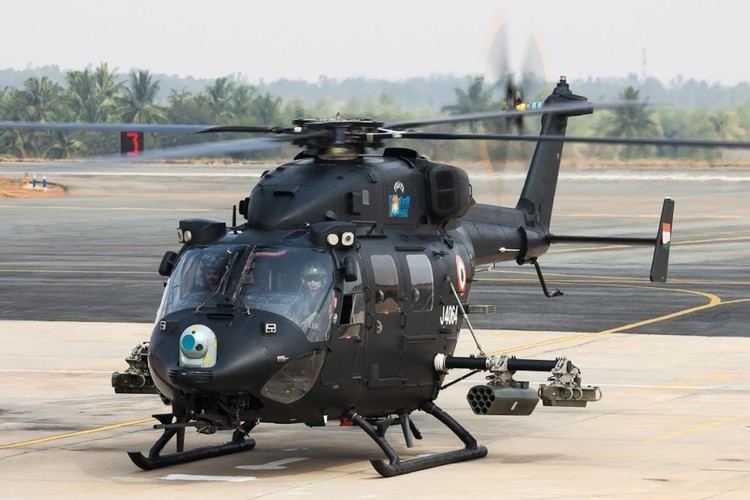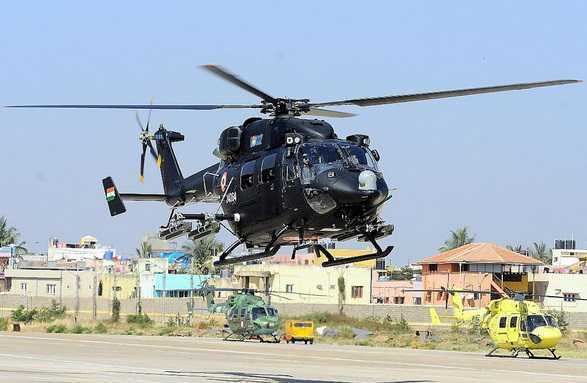Top speed 290 km/h Wingspan 13 m First flight August 16, 2007 | Length 16 m Introduced 2012 | |
Manufacturer Hindustan Aeronautics Limited | ||
Hal rudra operational in indian army
The HAL Rudra, also known as ALH-WSI, is an armed version of HAL Dhruv. Rudra is equipped with Forward Looking Infrared (FLIR) and Thermal Imaging Sights Interface, a 20 mm turret gun, 70 mm rocket pods, anti-tank guided missiles and air-to-air missiles.
Contents
- Hal rudra operational in indian army
- Design and development
- Service history
- Variants
- Operators
- Specifications Dhruv
- References

Design and development

While flight testing the Light Combat Helicopter, a modified version of HAL Dhruv, the Indian Army came to the conclusion that without making any major modifications to the Dhruv air-frame, an armed variant can also be developed and delivered to the army quickly. This variant was named Rudra.

The Rudra underwent integration trial for armament and electro-optical systems and a final round of weapon firing trials in September 2011, which included testing of the 20-mm turret gun. The 70 mm rockets and MBDA Mistral air-to-air missiles were tested in November 2011. The helicopter exceeded the payload and performance requirements at the height of 6 km. It has integrated sensors, weapons and electronic warfare suite, and uses an upgraded version of the glass cockpit used in the HAL Dhruv Mk-III. The sensors include stabilised day and night cameras, infrared imaging as well as laser ranging and designation. It has an Integrated Defensive Aids Suite (IDAS) from SAAB, with electronic warfare self-protection which is fully integrated into the glass cockpit. On-board self-defence systems include radar & missile detectors, IR jammer, chaff and flare dispensers. The helicopter can be used in both unarmed and armed roles that include reconnaissance, troop transport, anti-tank warfare and close air support.

In September 2012, ground tests for the first production Rudra were completed. It featured a turret gun, rockets, air-to-air missiles and could carry air-to-ground missiles like the anti-tank helicopter-launched Nag. HAL was awarded with a combined order of 76 Rudras for the Indian army, the primary customer, and the Indian air force. It was reported that the weapons platforms and avionics of HAL Rudra and the under-development Light Combat Helicopter would be the same.

The Indian Navy conducted flight trials in 2012-13, and found the helicopter suitable for coastal surveillance operations. It was impressed with the capability of the Rudra's sensors to track ships at 12 and 14 km. The image quality of the sensors was described as good enough to even read the name of ships at those ranges, and the navy was keen to order at least 20 helicopters.
Service history

Initial Operational Clearance (IOC) was expected by late 2012 and deliveries of production helicopters were to start by 2013. On 4 February 2013 during Aero India, the HAL Rudra Mk-IV achieved IOC, and two helicopters were handed over to the army.
Variants
Rudra, or ALH-WSI (Weapon Systems Integrated) has two main versions.
Operators
Specifications (Dhruv)
Data from Indian Army, Crawford, HAL, and Defense Update.
General characteristics
Alternate engine: 2 x Turbomeca TM 333-2B2 turboshaft, 746 kW (1,000 shp) each
Performance
Armament
Avionics
